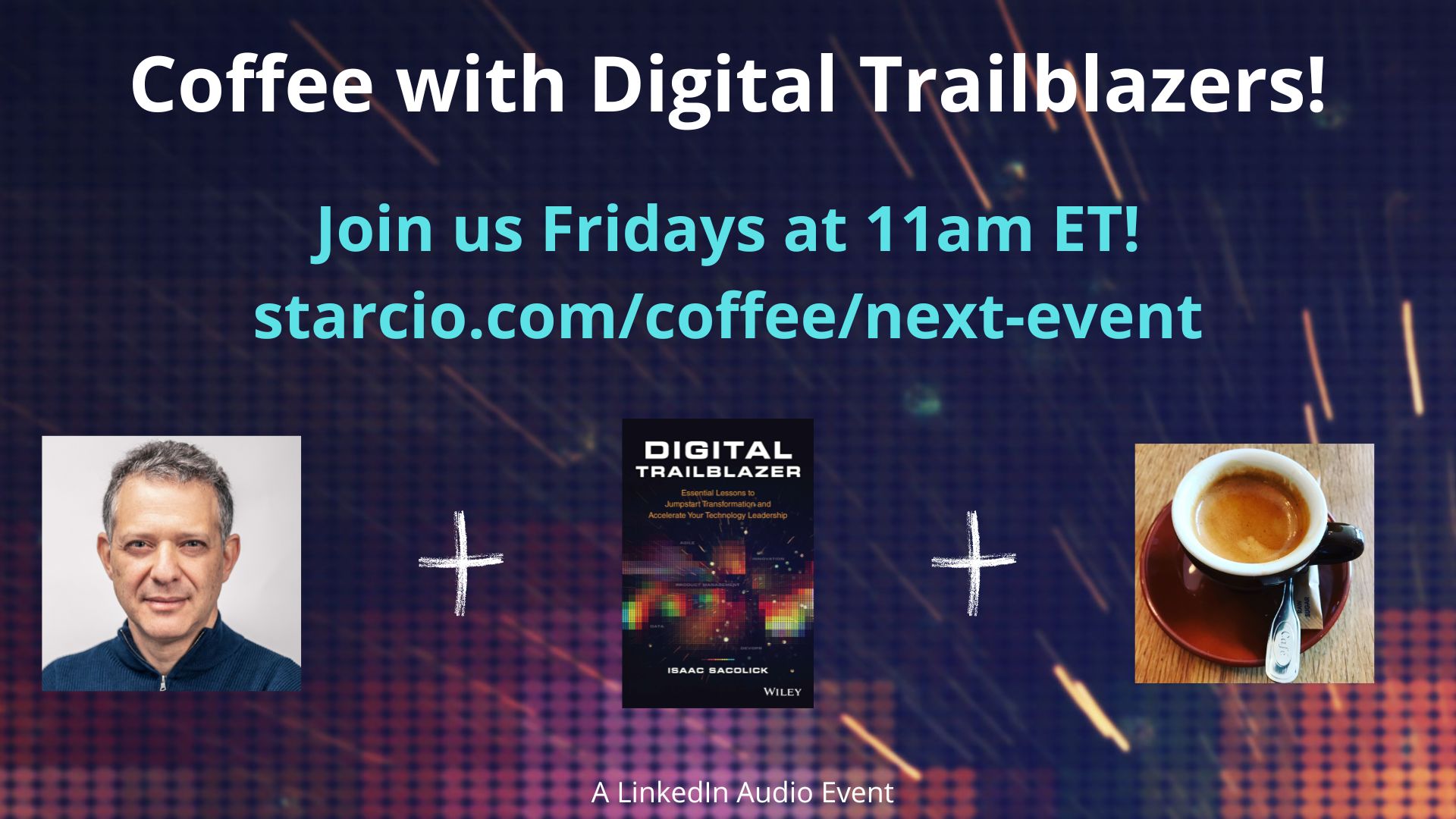You should evaluate your career progression and goals regularly, especially in this super-charged world where generative AI impacts many job functions and more businesses are accelerating digital transformation initiatives.
If you aspire to grow professionally, take on more challenging roles, and
help your organization build competitive advantages with technology, data,
and AI, then becoming a
Digital Trailblazer
should be one of your career goals.
Who are Digital Trailblazers? In this post where I introduced this pivotal role, I say, “Digital Trailblazers are aspiring leaders, drivers of transformations, and people who continuously step out of their comfort zones.” They challenge the status quo. They are driven but also empathetic. The Digital Trailblazer’s decision-making is deliberate, instinctive, and, most importantly, balanced in which lever to pull, when, and how hard. They think about when to be fast, how to be safer, and what areas to drive innovation.
Drive your transformation to Digital Trailblazer

Stepping into new roles and responsibilities isn’t easy. The transition from
individual contributor to
tech lead
or
delivery manager
is challenging because of the shift in managing your productivity and
contributions to one where you must guide teams on performance and outcomes.
A second challenge is when shifting from being a hands-on, go-to-person
expert around a technology or platform to an architect or other expert
creating on-ramping experiences for more junior technologists and evolving
self-organizing standards.
But, the
transformation to Digital Trailblazer
is more challenging as it requires you to manage your career and challenge
leadership norms. Let me explain.
Define your transformational vision statement
It’s easy to look at your early career as a series of hops by comparing the promises of a new opportunity versus the obstacles you understand and face daily in your current role. For example:
- Developers will consider the types of applications, platforms, and the development process when evaluating new opportunities.
- Operational engineers will review the technologies, but more importantly, they will evaluate an organization’s IT Ops have disciplined DevOps and IT Ops practices or are they running a shit show fire fighting frequent major incidents.
- Product managers will consider the importance of the customer base and the investment levels when considering new opportunities.
- Data scientists will evaluate the types of problems, data sets, tools, and team skills – comparing a future versus their current state.

But Digital Trailblazers look beyond the next opportunity. Managing your
career means defining a vision for yourself in 3-4-year incremental
milestones. If you think of the next few years as a personal transformation,
can you manage it like a digital transformation initiative?
In my one-page vision statement for digital transformation initiatives, I suggest leaders define target customers, goals, and value proposition – which you can translate into who you want to work with as benefactors and collaborators, what types of problems you want to focus on, and ultimately, how do you define success. Even if you aren’t looking for a new job, you can evaluate the programs you work on and your responsibilities through your personal vision statement.
Grow beyond your functional responsibilities
The second challenge is that standard hiring and promoting practices put
technologists in a box. You write code so that you may become a team lead or
an architect one day. You work in the NOC, so you’ll progress to leading it
one day. You work on the ERP, or maybe the CRM, or another platform, so the
expectation is that you’ll become an expert on them and take on greater
responsibilities. If you are a product manager or owner, then successful
initiatives will bring on more strategic responsibilities. Data scientists
will see a similar progression, from working on smaller problems and data
sets to experimenting with
large language models
on the organization’s intellectual property.
The problem is that you can’t easily become a digital transformation leader
looking at the world and your organization through a single-box lens. How
can you challenge the status quo or lead multidisciplinary agile teams
(including business, technology, and data specialists) if your knowledge and
experience are through a view limited by the functional disciplines where
you have expertise?

In my
Career Checklist for Digital Trailblazers, I suggest product managers, DevOps engineers, and data specialists expand
both the depth and breadth of skills and seek situations to learn through
experiences. The bottom line is that getting better at what you know how to
do is not sufficient to lead digital transformation initiatives.
Keep in mind that I have a specific definition of digital transformation. I
wrote in Driving Digital, “Digital transformation is not just about technology and its
implementation. It’s about looking at the business strategy through the lens
of technical capabilities and how that changes how you operate and generate
revenues.” The work you’re doing to take something and make it better –
whether it’s moving to the cloud, automating a process, or developing a data
visualization is not digital transformation, but it may be part of a digital
transformation objective.
Three questions to energize your career
Today, I’ll leave you these three questions to consider. Use them to
evaluate where you are today and to help define your transformation plan to
your career vision. If you have questions or are stuck, then
contact me
for some advice.
- Are you leading impacting digital transformation initiatives? – or are you working on transformations of limited strategic scope or programs that take something today and make it work better?
- Where are you stepping out of your leadership comfort zone? – or are your responsibilities boxing you into what you already know?
- How are you investing in learning, networking, and experiencing? – or is your lifelong learning plan largely based on what your organization has on the menu?
I’ll explore each of these questions in future articles. Learn more about my
programs for Digital Trailblazers.
Join us for a future session of Coffee with Digital Trailblazers, where we discuss topics for aspiring transformation leaders. If you enjoy my thought leadership, please sign up for the Driving Digital Newsletter and read all about my transformation stories in Digital Trailblazer.
 Digital Trailblazers! Join us Fridays at 11am ET for a live audio discussion on digital
transformation topics: innovation, product management, agile, DevOps,
data governance, and more!
Digital Trailblazers! Join us Fridays at 11am ET for a live audio discussion on digital
transformation topics: innovation, product management, agile, DevOps,
data governance, and more!


No comments:
Post a Comment
Comments on this blog are moderated and we do not accept comments that have links to other websites.